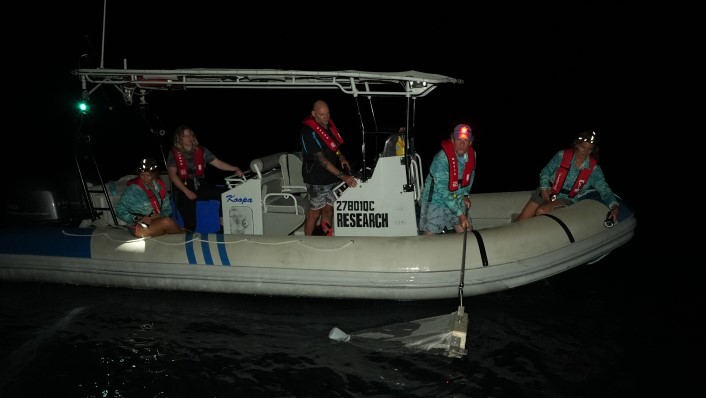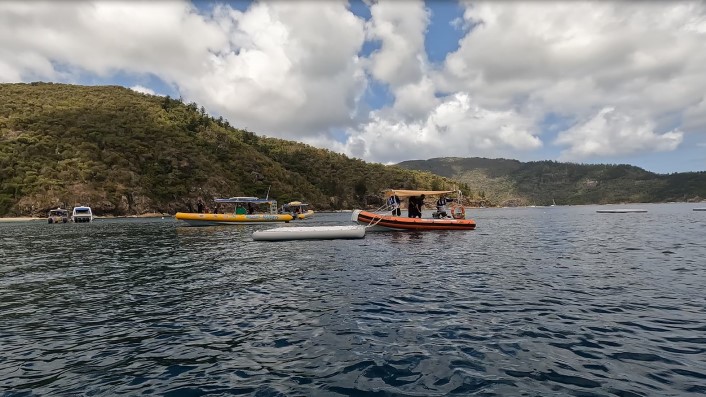One of the greatest challenges to reef restoration and resilience projects is scale. While many methods may work at a small scale, recovery efforts over much larger sections of reef are needed.
Boats4Corals is helping to scale up slick collection and larval release in the Whitsundays by harnessing the power of local skills, vessels and passion.
PDP project lead Dr Mark Gibbs (AIMS) and Boats4Corals project lead Dr Deborah Foote, with support from Prof. Peter Harrison (Southern Cross University) has developed an approach to safely and effectively bring many hands on deck to deliver more coral larvae to more reef areas. Local tourism operators and Traditional Owners are being trained in the method; from identification of spawning slicks, to releasing coral larvae from floating nursery pools onto the reef.
Slick collection and larval release involves collecting coral egg and sperm bundles from naturally occurring spawning slicks on the ocean surface during the spawning event. The fertilised eggs are placed into floating larval pools at sea, where the developing larvae are held for approximately one week, until they are ready to settle onto the reef. The larvae are deployed onto the reef via targeted cloud release (where the larvae are released to find their own place to settle on the reef) or on coral seeding devices (where larvae are settled onto the devices in the larval pools, then the devices placed onto the reef). When coral larvae settle, they form a permanent attachment to either the reef or seeding device, which is where they will live for the remainder of their lives.
Boats4Corals in 2025
In 2025, Boats4Corals will take place during the inshore coral spawning in November. This year, the project will combine the use of newly designed larval pools and coral seeding devices to train project participants in two key reef restoration methods. In addition to settlement of coral larvae onto seeding devices in the larval pools at sea, some coral seeding devices will have larvae settled onto them in tanks at Daydream Island’s Living Reef.
Ultimately, the project will provide a routine, safe, sustainable, and effective means of undertaking coral reef restoration by the reef community in the Whitsundays region. The end goal of the project is to have local operators willing and able to continue the restoration activities into the future without research organisation oversight. Dr Deb Foote is mentoring local operators through project handover across this final spawning season to support this goal.
This project is part of the Great Barrier Reef Foundation’s Reef Islands Initiative. The Initiative is supported by funding from Lendlease, the Australian Government’s Reef Trust, the Queensland Government and the Fitzgerald Family Foundation.
The Boats4Corals learning are being used by the Pilot Deployment Program in the Cairns region and the Keppel Island group in 2025.



